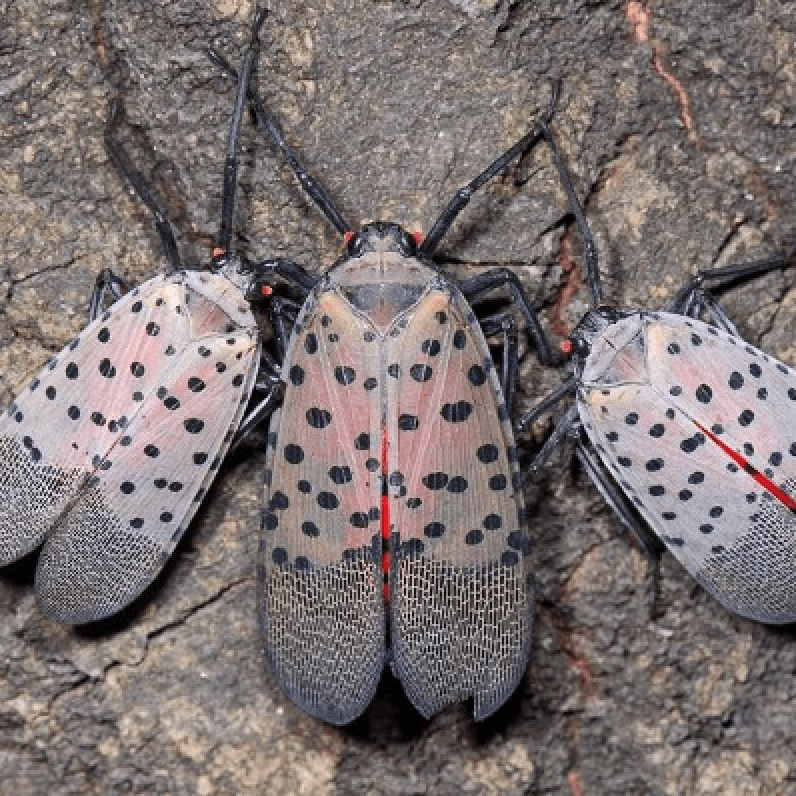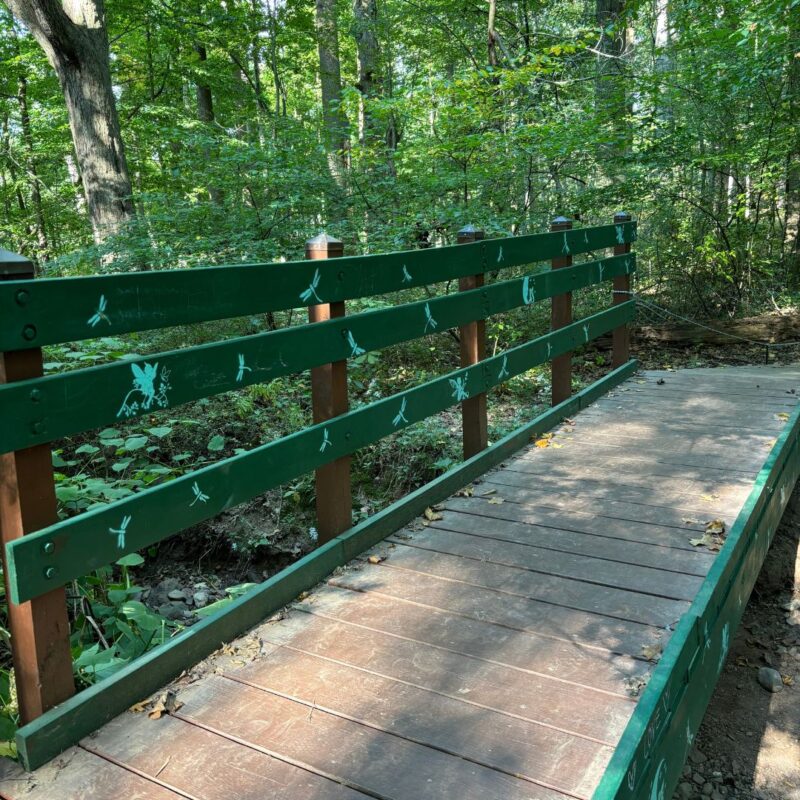Wildlife spottings are increasingly common in our area, and not all of them are welcome. On the list of New Jersey Agricultural Department’s ‘report immediately’ (and destroy) are lanternfly bugs — which are invasive planthopper bugs. The insect has been spotted in Montclair and the surrounding Essex County cities and is detrimental to plants and our ecosystem.

About the Spotted Lanterfly
Spotted Lanternfly (SLF), Lycorma delicatula, is an invasive planthopper native to China, India, and Vietnam; it is also established in South Korea, Japan, and the U.S. It was first discovered in the U.S. in Pennsylvania in Berks County in 2014 and has spread to other counties in PA, as well as the states of New Jersey, Delaware, Maryland, Virginia, West Virginia, New York, Connecticut, and Ohio.
This insect has the potential to greatly impact agricultural crops and hardwood trees. SLF feeds on the plant sap of many different plants including grapevines, maples, black walnut, and other important plants in NJ. While it does not harm humans or animals, it can reduce the quality of life for people living in heavily infested areas.
Read More: Pickleball + Tennis Courts Debut in Bloomfield
Why You Should Care
SLF is a seriously invasive pest with a healthy appetite for our plants. It can be a significant nuisance, according to the New Jersey Division of Agriculture, affecting the quality of life and enjoyment of the outdoors.
The spotted lanternfly uses its piercing-sucking mouthpart to feed on sap from over 70 different plant species. It has a strong preference for economically important plants and the feeding damage significantly stresses the plants, which can lead to decreased health and potentially death.
As SLF feeds, the insect excretes honeydew (a sugary substance) which can attract bees, wasps, and other insects. The honeydew also builds up and promotes the growth for sooty mold (fungi), which can cover the plant, forest understories, patio furniture, cars, and anything else found below SLF feeding.
If you see a Spotted Lanternfly, it’s crucial to report it.
To report a sighting, use the reporting tool or call 833-4BADBUG (833-422-3284). For other questions, email [email protected].
According to the DOA, the Tree of Heaven seems to be its ‘preferred’ laying spot and since surveying and treatments began in the state in 2018, more than 200,000 Trees of Heaven on almost 19,000 acres have been treated.
New York residents can also report a sighting using the agriculture department’s online reporting tool. Additionally, residents should know the signs of a lanternfly infestation and be able to identify their eggs, as adults begin laying in September.
See More: Bamboo Village Vietnamese Opens in Verona
Signs of an infestation may include:
- Sap oozing or weeping from open wounds on tree trunks, which appear wet and give off fermented odors.
- One-inch-long egg masses that are brownish-gray, waxy, and mud-like when new. Old egg masses are brown and scaly.
- Massive honeydew build-up under plants, sometimes with black sooty mold developing.
- If you see a spotted lanternfly somewhere other than New York or New Jersey, contact your state’s agriculture department.
“It will take a combined effort to help keep this pest from spreading,” New Jersey Department of Agriculture Secretary Douglas Fisher shared in a statement.
To report a sighting, use the reporting tool or call 833-4BADBUG (833-422-3284). For other questions, email [email protected]. The DOA also encourages you to destroy the bug and any nest if spotted.










